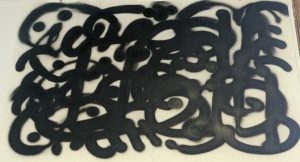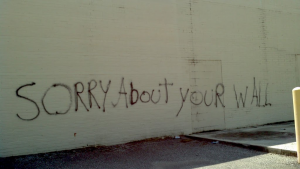We brought in Matt Constant as our expert for this project. He is a graffiti artist and we used the Motive motion capture system to track the position and orientation of his spray can as he created his artwork.
We first created a fixture that held 3 reflective motion tracking spheres in order to allow the software to track the spray can as a rigid body. Additionally we attached one of the spheres to his finger to act as a toggle to track whether the spray can button was being held down or not.
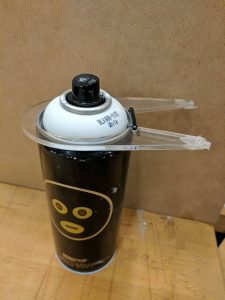
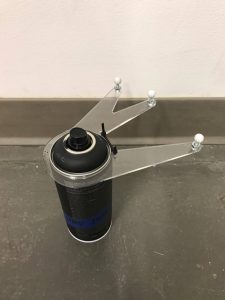
We then had him test our modified spray can to make sure the attachment points would not get in the way of his craft, and tracked the position of the can while he sprayed an art piece onto paper. We were able to track his motion in 3D and see more of the spatial process that is lost when translating this motion into a 2D art piece.
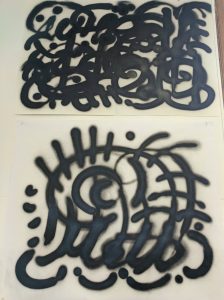
Once we took the motion capture data into Grasshopper, we were able to uncover patterns and shapes that were hidden in the final product due to the way the spray paint layers on the sheet of paper. The path Matt takes through the paper to create his work is revealed clearly when stepping through each frame of the motion capture data. We also analyzed it for 3D characteristics including height and orientation of the spray can while spraying, speed of motion of the can, and the tightness or looseness of corners and curves.
Once we had the speed, height, and orientation of the can we represented the data visually as a path of cones showing the spray from the can (as seen on the video.) The cones show the distance of the can from the paper, and the density of cones in one area shows the speed Matt was moving at that point in the drawing. We also added ellipses to represent the thickness of the paint lines on the paper.
Finally we used these ellipses and cones to create a 3D surface shell that represents this data as one fluid structure.
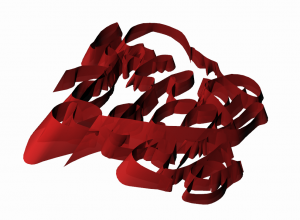

By looking at the way Matt varies his speed and orientation of the spray can we can see his skill and control over the can, evident in the curvature of his lines as well as the size and thickness of the paint in his drawing.
